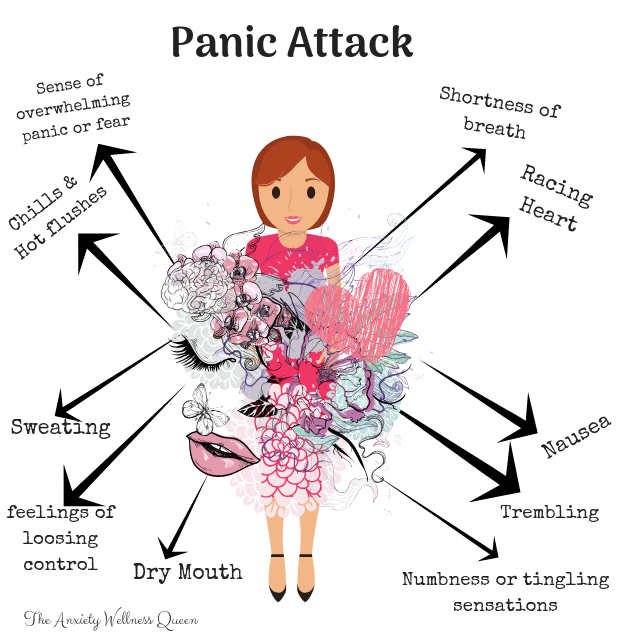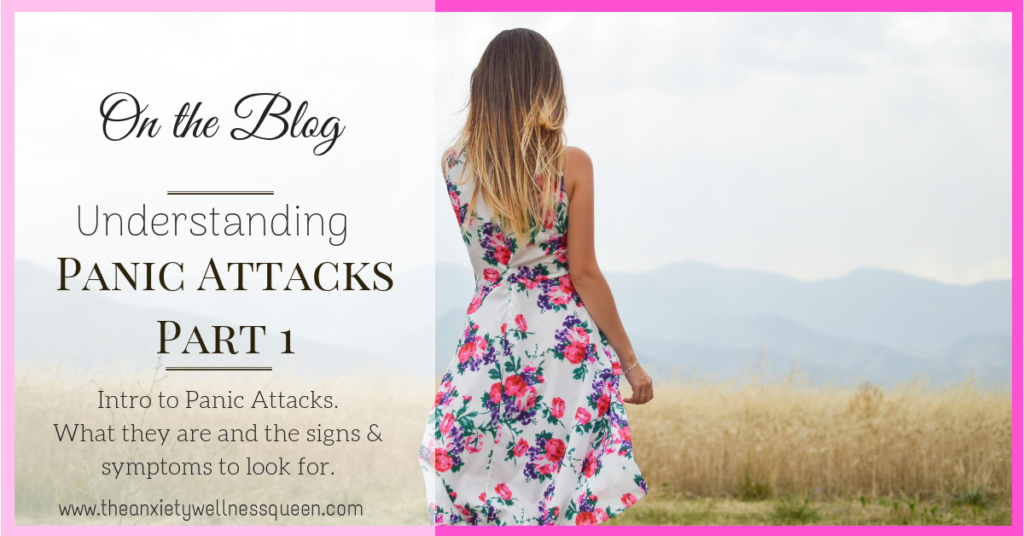Did you know that up to 40% of our population have experienced a panic attack at some point in their life? That percentage is massive! It really broke my heart to hear how many of YOU have (and still do) experience them. So many of you have reached out about your panic attacks with loads of questions so I thought I would put a series of blog posts together to hopefully answer those questions for you. In this 3 part series I will share
– What panic attacks are.
– How to identify them.
– I will touch on agoraphobia.
– I will be sharing some of my favourite tools & tips.
– Some helpful resources
– And what you can do to get help.
In today’s post I am going to answer some of the most common questions I am asked when it comes to panic attacks. What is a Panic attack? How do i know that i am having one? And what are the signs and symptoms to look for? I also touch on Agoraphobia and what it is and where it stems from. I hope you find the information that I share today and the next coming weeks helpful!
So lets start at the beginning.. what in the world is a panic attack??? (As you know it can be a very similar to when you are feeling anxious although I would say it is a lot more INTENSE).
What is a Panic Attack?
A Panic Attack, often mistaken for a heart attack, the fear of ‘dying’ or going ‘crazy’ (to name a few of the symptoms) is described as a brief episode of intense anxiety which causes physical sensations of fear. Each of these episodes can last on average.. about 10-30min (this can of course vary whilst the emotional and physical effects can last a lot longer). I think one of the biggest and most terrifying factors for those who experience panic attacks are the physical symptoms that are associated with them. Many believe that panic attacks just appear out of nowhere, for no reason and to be honest I don’t agree with that at all. Even though they may feel that way at the time, like there is no direct trigger, panic attacks are still a build-up of fear, stress, anxiety, emotions, thoughts and feelings over time. This concept only creates MORE fear in people because they feel like their body is a loose cannon and fires when it wants with no real cause. From that idea and belief we tend to build issues surrounding trusting ourselves and our body’s ability, which creates more confusion. This theory can create a sense of hesitancy for people looking to seek help because they then feel like there are no real answers. So why bother?
So, let’s take a look at some of the most common signs and symptoms to look out for when you experience a panic attack.
Signs and Symptoms
According to the DSM-5 a panic attack is characterised by 4 or more of the following symptoms..
– Palpitations, pounding heart, or accelerated heart rate
– Sweating
– Trembling or shaking
– Sensations of shortness of breath or smothering
– A feeling of choking
– Chest pain or discomfort
– Nausea or Abdominal stress
– Feeling dizzy, unsteady, lightheaded, or faint
– Feelings of unreality (derealization) or being detached from oneself (depersonalisation)
– Fear of losing control or going crazy
– Fear of dying
– Numbness or tingling sensations
– Chills or hot flushes

These symptoms of course differ from person to person in their intensity as well as how often they are experienced. Many also report that their own symptoms can differ from time to time. The physical element associated with a panic attack tends to be the most obvious, although there is a huge importance on the thought process, the beliefs and behaviour as well. The mind and body is hugely related, linked and synced when it comes to your panic attack. Now there is something really important that I mention here.. even though your physical symptoms are terrifying and feel like they are life threatening, they are not. The racing heart, the shortness of breath , the scary thoughts. They WILL NOT HARM YOU.
I will chat more in part 2 about some mantras and affirmations you can use during this time to remind you that you are infact okay, that you are safe and that these symptoms will not do you harm.
Agoraphobia
Agoraphobia can develop as a result of the perceived fear of experiencing a panic attacks in a public place where you feel it may be hard to escape and help may be hard to access. I guess you can say it develops a FURTHER fear of being in public places or specific places that you may feel could be a trigger for you (based on past experiences). For some, they may begin avoiding situations, places and even people because of it.
As I mentioned earlier about some of the information generally shared about panic attacks, this is another one that people are often told can come ‘out of the blue’ or unsure as to why agoraphobia may occur (insert eye roll). In my experience working with clients it is evident that it is a natural progression (turned FEAR) due to having overall anxiety and or panic attacks.
Your anxiety tells you that..
‘If this happens once, that it is likely to happen again’
Just from that conscious OR subconscious statement your body physically begins to react and you alter your behaviour and actions as a result of it. It is the natural protective mechanism in your body reacting to a perceived ‘dangerous’ situation. I really don’t believe that anything related to anxiety occurs for no apparent reason. For some it can show up due to a specific event or experience and for others it is a build up over time.
Today my aim was to introduce you to what panic attacks were, the common symptoms, touch on agoraphobia and share a few of my opinions in relation to this topic.
In Part 2 I will be sharing some of my Top Tips to help you manage your panic attacks! You definitely don’t want to miss out on it so keep an eye out.
I would love to hear your thoughts, opinions and biggest take away from this post in the comments below!
Much Love



